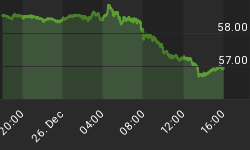Greenspan Predicts Greek Exit
Europe still has big problems with debt, which could push already-indecisive markets into bearish territory in the coming weeks. From Bloomberg:
The former head of the US central bank, Alan Greenspan, has predicted that Greece will have to leave the eurozone. He told the BBC he could not see who would be willing to put up more loans to bolster Greece's struggling economy. Greece wants to re-negotiate its bailout, but Mr Greenspan said "I don't think it will be resolved without Greece leaving the eurozone". Earlier, UK Chancellor George Osborne said a Greek exit would cause "deep ructions" for Britain.
How Vulnerable Are U.S. Stocks?
To help answer that question, we can turn to the charts. Trends help us filter out the day-to-day noise in the equity markets. Moving averages are one of many ways to monitor market trends. Professional traders and managers often use the 50-day moving average to monitor intermediate-term trends in stock prices. In the chart below, the Dow's 50-day moving average rolled over two times, once in late 2007 and again in mid-2008, warning investors of increasing downside risks (see orange arrows). Note stocks lost an additional 39% after the 50-day rolled over in June 2008, meaning observable warnings came before the big plunge.

How Does The Dow Look Now?
The conviction of stock buyers improved at the 2014 October low; notice how the slope of the Dow's 50-day turned up in a bullish manner (green arrow in chart below). With investors trying to balance an improving economy with concerns about Greece and a Fed rate hike, stocks have had an indecisive look in recent weeks (see orange arrow). The current flat look of the Dow's 50-day tells us to pay closer attention, especially with renewed concerns about Greece's place in the eurozone.

Investment Implications - The Weight of The Evidence
We can always find things to be concerned about, just as we can always find bullish evidence. The weight of the evidence is what drives markets. This week's stock market video takes a step back and reviews the big picture for bulls and bears.
Last week's push higher in the equity markets gives the bulls some breathing room from a key support perspective. The bears have regained some short-term traction via the Fed and eurozone. As long as the S&P 500 remains above the key range of 1976 to 1988, we will continue with a "less is more" approach, within the context of a trading range. Below 1988 on the S&P 500, we will begin to monitor the markets with a more defensive eye.
















